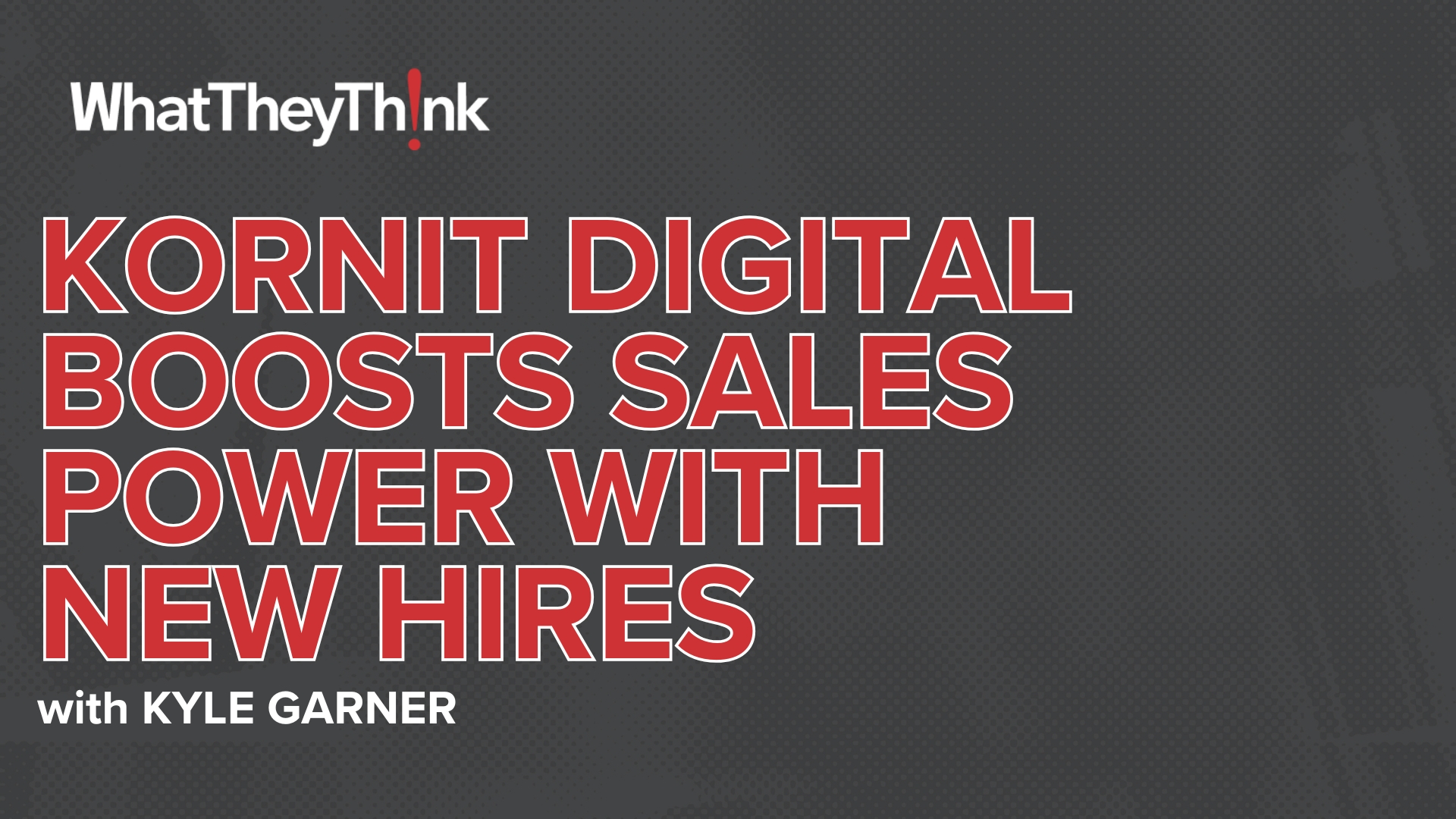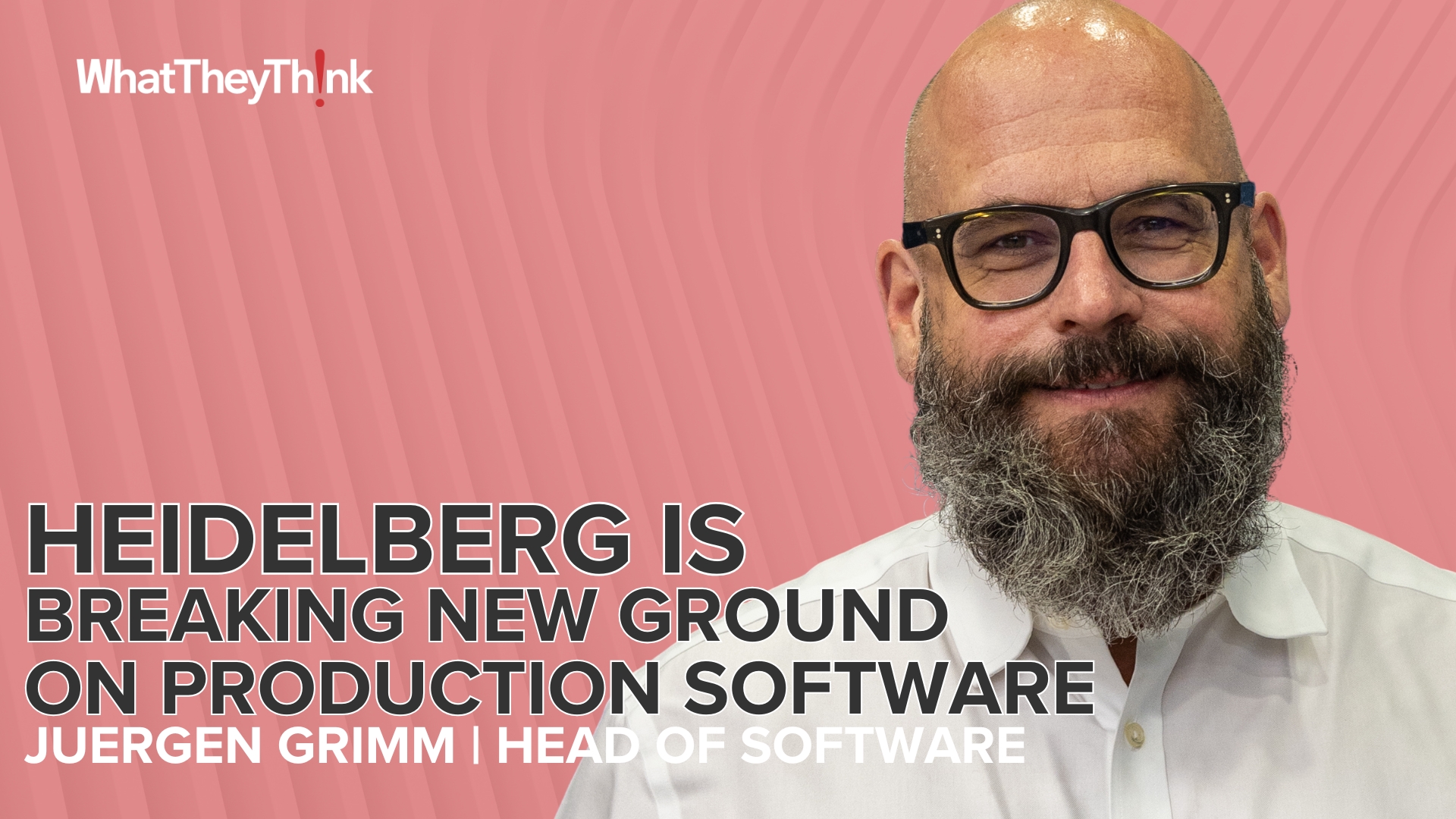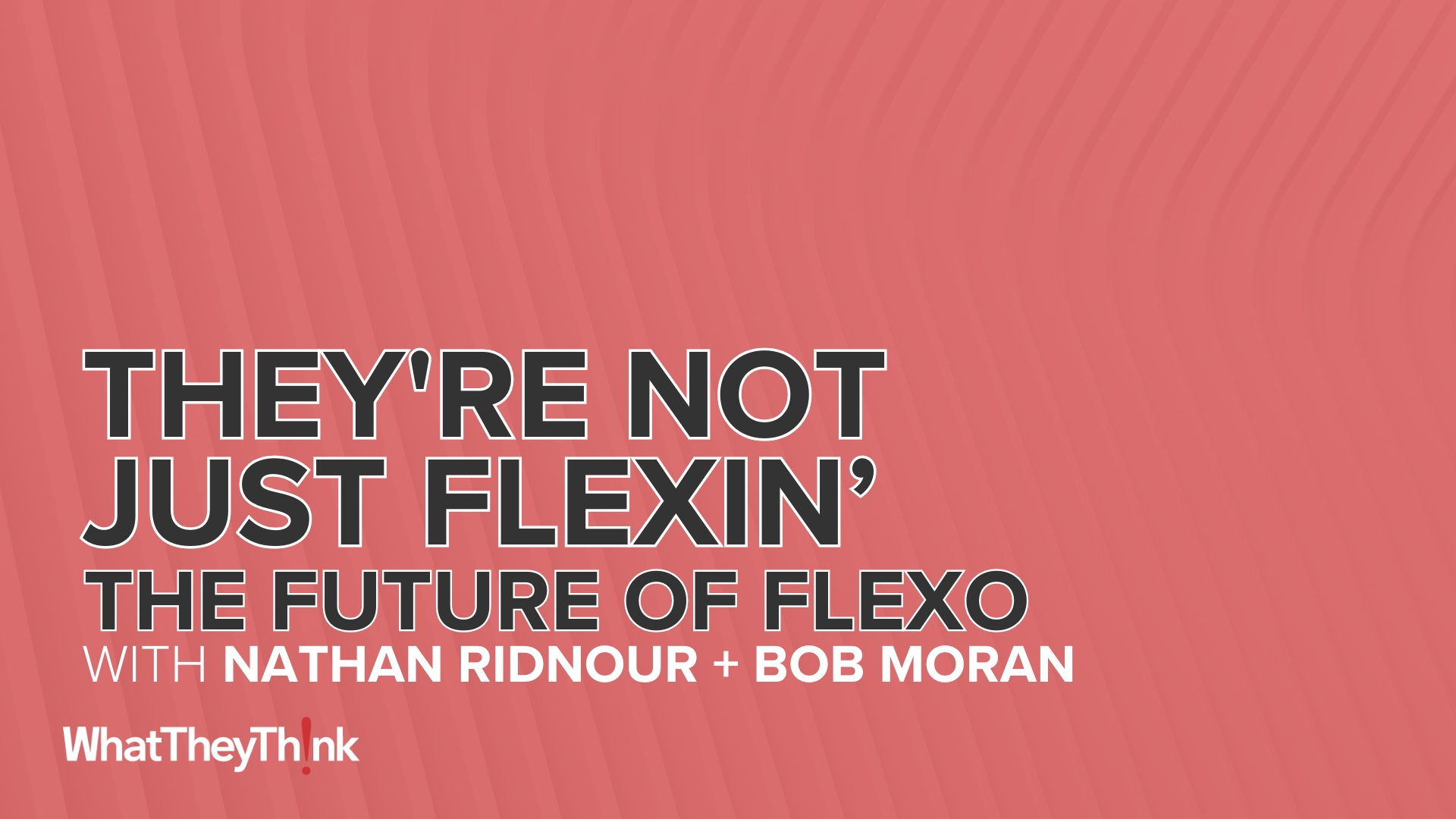A fortnight ago, in part I of this feature, we took a broad look at the different categories of inks available for wide-format inks. This week, we’ll take a closer look at how inks handle different applications (or perhaps vice versa) and, more importantly, how to think about ink in the context of choosing wide-format equipment, and how to measure and evaluate estimates of things like “cost per square foot.”
In part I, we saw that digital wide-format differs from other analog printing technologies in that the inks need to be as flexible as possible, which is driving new flexible formulations.
“Screen printers used to pull a can of ink off the shelf for a particular substrate and then pull another can off the shelf for another,” says Randy Paar, Senior Marketing Specialist for Display Graphics, Canon Systems America (né Océ). “Unfortunately, in the world of digital, we don’t have the ability to switch out the ink on a job-by-job basis. We don’t have the luxury of a one-formulation-fits-all approach.”
The rapid evolution of the wide-format graphics market is driving the correspondingly rapid ink development. As devices can print on newer substrates, engendering new applications, print providers are exploiting new vertical markets—which drives the need for newer inks to handle newer applications. It’s kind of a chicken-and-egg scenario—and, in fact, you can even print on eggs, if not on chickens (which would just be strange).
While wide-format inks are being developed to be as flexible as possible, the fact remains that certain types of inks remain wedded to specific applications, which is a function of the substrates that will be printed and where and how the graphics will be installed or displayed.
The Style of Elements
The late 1990s saw a great leap forward with the advent of pigment-based inks which, independent testing showed, could extend the life of a print up to 100 years or more. At the time, dye-based inks had a very short lifespan that could be often measured in weeks. Although many display graphics are not intended to last for decades, those new inks did prove to be a boon to folks like digital artists who were trying to sell their work and could not in all good conscience sell a print that was going to fade in a few months.
We’ve come a long way in the past 15 years in terms of print longevity, but today’s ink varieties still vary in the extent to which they can be used in different environments and on different surfaces. There is a fair amount of chemistry involved in the interaction between ink and substrate, which is why a great deal of testing takes place to ensure their mutual compatibility. But external forces can also require inks that have different attributes. Outdoor graphics, most obviously, need to be UV- and weather-resistant, but even indoor graphics may require protection from various kinds of elements, such as sunlight streaming in through nearby windows, fluorescent or other kinds of lighting, and even smoke, if printed graphics will be displayed in an environment where lots of people will be smoking, such as a blues bar or perhaps Edward R. Murrow’s house. (By the way, the graphics on the ceiling of New York’s Grand Central Station were de-gunked in 1998 and it was found that 70% of the muck obscuring the graphics was nicotine and tar from years of the smoking masses passing through—check out one uncleaned brick to see what decades of incessant cigarette smoking can do to graphics, if not the lungs.)
Applications Applications Applications
Many types of wide-format inks have been designed to be as flexible and versatile as possible, but even so they still have limitations on the kinds of materials they can print on and thus what types of applications they are good for.
HP’s new Latex inks and the corresponding printers, as we mentioned in part I of this feature, have been developed with maximum versatility in mind. “One of the things we see among customers who have more traditional small-format presses, or even offset presses, is that that they’re interested in having flexibility,” says Sandy Gramley, Scitex Category Product Manager, Large-Format Production Aftermarket, HP. “One of the things that Latex does bring is a very broad range of versatility.” It’s a very flexible ink—in more ways than one. “Some inks can stretch more, can bend more [than others] and Latex ink can actually stretch many times its printed size, and that’s one of the reasons why it’s great for car wraps.”
The Latex inks will print on an extremely wide variety of things, such as self-adhesive vinyl, PVC, backlit and other films, low-cost uncoated papers, textiles, wallcoverings—you name it. Another oft-cited advantage of HP’s Latex inks is that they are cured quickly inside the printer. Prints come out dry and they can be immediately laminated or otherwise finished, displayed, shipped, etc.
But what are the limitations of Latex?
At present, Latex printers cannot print directly on rigid materials. “Latex is a roll-to-roll device, so it prints on all types of media, but any time you want to print on a rigid surface, it’s a mounting process,” says Gramley.
“There are always going to be applications that one printer can do better than another,” she adds. “If you need a true fine-art photography print, or really fine lines for an architectural drawing, it’s really hard to beat a really good water-based ink with a really tiny drop size. You can’t reproduce that in Latex. It’s not possible at this point in time.”
There has also been much talk of the versatility of UV-curable inks, but even in that category, variations abound.
EFI, for example, offers a range of UV-curable inks. “The UV inks for our hybrid [combination flatbed and roll-to-roll] printers are targeted for good adhesion and overall performance with rigid substrates and for the roll-to-roll applications,” says Stephen Emery, VP Ink Business & Jetrion, EFI. “The UV-curable inks for our roll-to-roll printers are designed to be more flexible, given the nature of the media used for printing with these devices. The hybrid printers require an ink that is not as soft and performs well on rigid substrates and flexible media.”
There are also UV inks that cure either by traditional mercury-vapor lamps and those that cure by newer LED lamps. This affects choice of application, as the mercury-vapor lamps run very hot and can distort thin plastic substrates. LEDs, however, are much cooler, and can thus be used for thin plastic materials.
Speaking of plastic materials, one burgeoning wide-format printing application—which we will cover in a subsequent feature—is thermoforming, aka vacuum forming. In this case, an image is printed on a plastic surface, which is then placed in a thermoforming oven. It’s heated and molded around a three-dimensional object. In these kinds of applications, the ink must be specially formulated to not only be resistant to heat but must also be able to be stretched and bent without cracking or discoloring. EFI in particular has been developing ink sets specifically designed for thermoforming applications. “This is an exciting new ink set that has already opened up new opportunities for new customers and markets,” says Emery.
Cost Per Square Foot
Consumables—ink and paper—have traditionally been the biggest cost center for just about any kind of printer, and in wide-format printing, it’s no different. Estimating—or guesstimating—what you are likely to spend on ink as a wide-format printer is no easy feat until you actually start printing, and estimating ink costs when shopping for equipment is also fraught with difficulty. Since there are so many applications and types of things that can be printed, the “cost per square foot” can vary wildly. And of course the ink technology itself can vary greatly.
“When you’re looking at ink technologies, they all have their strengths and weaknesses,” says Canon’s Paar. “UV-curable ink will have greater yield per square footage than, say, a solvent, which has a lot of solvent that evaporates and there goes your volume of ink. So if I’m buying a liter of UV ink for $200 compared to a cartridge of solvent ink for $70, it’s not apples and apples.”
“The challenge of cost per square foot is that it’s completely image-dependent,” says HP’s Gramley. “If you’re printing an architectural drawing, you may be using 50 cents worth of ink, or you may use $40 worth of ink on one really big fine-art print.” That can be a frustrating response when estimating potential ink costs, but unfortunately that’s the nature of the beast. “How much does it cost to feed a teenage boy?” Gramley adds. “It all depends on how much they eat. It’s kind of the same.”
Not that it necessarily has to be impossible. “Really the best way is to look at the kinds of images you do, have something printed as a sample, and get an idea of what something costs,” says Gramley.
Canon takes a different tack. “We devised a testing method where we print a sellable quality print, an image that we created, and we weigh the amount of ink, determine the specific gravity, to figure what volume of ink was used per print,” says Canon’s Paar. “We overlay multiple prints on that same board. We weigh the board before and after so we can determine exactly how much ink was put down. And then we move to a competitive product and we print that same image to those same criteria, and then do the same thing. And we calculate how much actual ink was used between devices to produce the same quality output.”
Adds EFI’s Emery, “We are able to accurately take a printed image and define how much ink per square foot is used. We’ve created models which calculate ink cost per square foot and can use actual images or use ones with light-medium and heavy ink coverage as examples to provide ranges to our customers. The actual cost per square foot is image dependent and relates to how much ink coverage and laydown per color.”
One Ink to Rule Them All?
Okay, so where does ink fit in the wide-format equipment purchase “decision tree”?
“Ink is part of the whole digital printing system selection and is critical,” says EFI’s Emery. “At the end of the day, a print provider is selling the finished image. The final printed image is a result of the software, printing system, and ink.”
And printers are not locked into one particular printing technology forever. “Some customers start with a Latex, then add a UV-curable,” says HP’s Gramley. “If they want to do textiles, they may add a dye-sub. But if you start with something that gives you a great deal of versatility, you can add always add devices that are more specialized as you grow that part of your business.”
“We’re really at the beginning of what inkjet is capable of doing,” says Canon’s Paar. “There are more and more formulations that will allow printers to do some stuff they never even thought possible today.”
Wide-Format Inks and Applications
|
Aqueous |
Solvent |
UV |
Latex |
Dye-Sublimation |
|
technical drawings |
outdoor graphics |
rigid substrates |
wallcoverings |
permanent textiles |
|
renderings |
billboards |
plastics |
POP/POS displays/posters |
photoprinting |
|
photographs |
banners |
wood |
temporary-use textiles |
industrial applications |
|
fine art |
vehicle graphics |
glass |
outdoor banners |
|
|
indoor graphics |
adhesive decals |
acrylics |
backlit films/lightboxes |
|
|
layouts/proofs |
vinyls |
“found objects” |
vehicle wraps |
|
|
other applications that don't require UV-resistance |
|
applications that require abrasion-resistance |
|
|
|
|
|
applications that require soap-resistance (i.e., that will be cleaned) |
|
|














